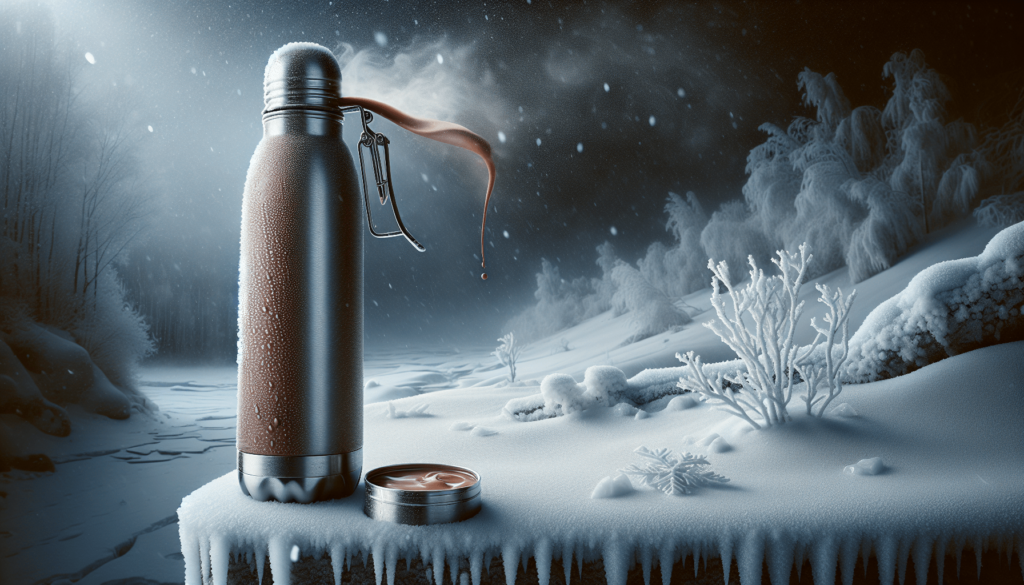Imagine you’re out in the wilderness, embracing the serenity of nature and embarking on a thrilling adventure with your loved ones. The rain begins to pour, and suddenly you find yourself soaked to the bone. Don’t let the dampness dampen your spirits! In this article, we will share with you seven survival tips that will keep you warm even when you’re wet. From clever clothing choices to innovative fire-starting techniques, these tips will ensure that the chill doesn’t stand a chance. So grab your rain gear and get ready to tackle the elements with confidence and warmth.

Layer Up
When it comes to staying warm in wet and cold conditions, layering up is key. By wearing multiple layers, you create pockets of air that insulate your body and trap heat. Here’s how you can layer up effectively:
Wear moisture-wicking base layers
Start with a moisture-wicking base layer that will keep sweat away from your body. Look for materials like merino wool or synthetic fabrics that are designed to pull moisture away from your skin. These base layers will help regulate your body temperature and keep you dry.
Add insulating layers
Once you have your base layer on, add insulating layers on top. Wool or fleece sweaters are great options as they provide excellent insulation. Make sure to choose layers that are not too tight, as you want to allow for air circulation between the layers.
Top it off with a waterproof outer layer
The final layer should be a waterproof outer layer, such as a rain jacket or shell. This layer will protect you from rain and snow, keeping you dry and preventing heat loss. Look for outer layers that are breathable to help prevent moisture buildup.
Build a Shelter
Finding or creating a dry shelter is crucial when trying to stay warm in wet conditions. Without shelter, your body is exposed to the elements, which can lead to hypothermia. Here’s what you can do to build a shelter:
Find or create a dry shelter
Look for natural shelters like caves, rock formations, or overhanging trees. If no natural shelter is available, you can build one using materials from your surroundings. Fallen branches, leaves, and even large rocks can provide protection from the rain.
Use natural materials to insulate the shelter
To insulate your shelter and keep in heat, gather leaves, grass, or even moss to create a layer between you and the ground. This will help prevent the cold and dampness from seeping into your shelter.
Create a waterproof roof or cover
Use large leaves, a tarp, or even a poncho to create a waterproof roof or cover for your shelter. This will protect you from rain or snow and keep your shelter dry. Make sure to secure the roof properly to prevent it from blowing away in strong winds.
Start a Fire
A fire not only provides warmth but also helps dry out wet clothing and gear. Here’s what you need to do to start a fire in wet conditions:
Gather dry firewood
Look for dry firewood that is off the ground and protected from moisture. Fallen branches or dead standing trees are good sources of dry wood. If you can’t find dry wood, you can collect wet wood and split it to access the dry inner layers.
Use tinder and kindling to start the fire
Even in wet conditions, you can still find dry tinder and kindling. Look for dry leaves, small twigs, or birch bark that can easily catch fire. Build a small fire using these materials, and once it’s burning steadily, gradually add larger pieces of firewood.
Maintain the fire for warmth and drying
Keep feeding the fire with additional firewood to maintain a steady source of heat. As the fire grows, position wet clothing and gear near the fire to help dry them out. Be cautious not to place anything too close to the flames, as it can catch fire.
Dry Your Clothes
Wet clothing can quickly sap your body heat and make you feel colder. Drying your clothes is essential for staying warm in wet conditions. Here’s what you can do:
Take off wet clothing
As soon as possible, remove any wet clothing and replace it with dry layers. Wet clothing will only make you colder, so it’s crucial to remove it and prevent further heat loss.
Use body heat to dry smaller items
If you have smaller wet items like gloves or socks, you can use your body heat to dry them. Place them in a pocket close to your body or tuck them under your clothing. Your body heat will help evaporate the moisture and dry the items more quickly.
Create a makeshift clothesline
If you have larger wet items like pants or jackets, you can create a makeshift clothesline using paracord or any strong string. Hang the clothes near the fire or in a well-ventilated area to help them dry. Make sure to check on them regularly and rotate them to ensure all sides dry evenly.

Use Hot Water Bottles
Hot water bottles can provide a portable source of warmth that can last for hours. Here’s how you can use them effectively:
Fill a water bottle with hot water
Boil water over your fire or heat it using a camping stove. Fill a sturdy water bottle with the hot water, making sure it is securely capped to prevent any leaks.
Place the bottle in your sleeping bag or clothing
To benefit from the warmth radiated by the hot water, place the bottle inside your sleeping bag or clothing. It will help keep you warm throughout the night and provide comfort in cold conditions.
Benefit from the warmth radiated by the hot water
The hot water bottle will radiate heat, providing a comforting warmth that can last for several hours. It can be especially helpful during colder nights or when you’re unable to start a fire.
Stay Active
Engaging in physical activity is an excellent way to generate body heat and stay warm in wet conditions. Here’s what you can do:
Engage in physical activity to generate body heat
Keep moving and engage in physical activities that get your blood pumping. Walking, hiking, or performing light exercises can help raise your body temperature and keep you warm.
Avoid activities that make you sweat excessively
While physical activity is important, avoid engaging in activities that make you sweat excessively. Sweat can make your clothing damp and contribute to heat loss. Pace yourself and find a balance between staying active and keeping dry.
Keep moving to improve circulation
Moving your body helps improve blood circulation, which in turn helps keep you warm. Regular movement can prevent your extremities from getting cold and help distribute warmth throughout your body.
Consume Warm Foods and Drinks
Eating warm foods and drinking hot liquids can help raise your body temperature from the inside. Here’s what you should do:
Eat foods high in calories and healthy fats
Consuming foods that are high in calories and healthy fats can provide your body with the fuel it needs to generate heat. Foods like nuts, dried fruits, and energy bars are great options to keep your energy levels up.
Drink warm liquids to raise your body temperature
Hot beverages like herbal tea, hot chocolate, or soup can help warm up your body from the inside. The warmth of the liquid can provide instant comfort and help raise your body temperature.
Avoid alcohol and caffeine as they can be dehydrating
While a warm alcoholic beverage may seem appealing, alcohol and caffeine can actually dehydrate your body. Dehydration can make you more susceptible to the cold, so it’s best to avoid these drinks when trying to stay warm.
Insulate your Feet and Hands
Your extremities are often the first to feel the cold. Insulating your feet and hands is essential for staying warm in wet conditions. Here’s how you can do it:
Wear waterproof socks and gloves
Invest in waterproof socks and gloves to keep your hands and feet dry. Wet feet and hands can quickly become cold and uncomfortable, so having waterproof gear is crucial.
Utilize hand and foot warmers
Hand and foot warmers are small packets that generate heat when exposed to air. These can be placed inside your gloves and socks to provide additional warmth. They are portable and are great for extended periods outdoors.
Keep your extremities dry
Be proactive about keeping your hands and feet dry. If they do get wet, make sure to dry them thoroughly as soon as possible. Use a towel or spare clothing to remove any moisture and prevent heat loss.
Use Heat Packs
Heat packs are a practical and efficient way to stay warm in wet conditions. Here’s how you can use them effectively:
Activate portable heat packs
Portable heat packs are activated by shaking or flexing them, causing a chemical reaction that produces heat. Follow the instructions on the pack to activate it before use.
Place them inside your clothing or sleeping bag
Once activated, place the heat packs inside your clothing or sleeping bag. Focus on areas like your chest, back, or feet where heat can be most beneficial. The heat packs will provide comforting warmth for several hours.
Enjoy the warmth they provide for several hours
Heat packs are designed to provide heat for an extended period. They can be a valuable source of warmth, especially when other methods may not be readily available. Keep several heat packs on hand to ensure you have a consistent source of warmth.
Dry and Insulate Your Sleeping Area
A dry and insulated sleeping area is vital for a restful night’s sleep and staying warm in wet conditions. Here’s what you can do:
Choose a dry and elevated sleeping spot
When setting up your sleeping area, choose a spot that is dry and elevated. Avoid low-lying areas where water may pool or areas that are prone to flooding. A higher location will help keep you dry throughout the night.
Place insulating materials under your sleeping bag
To insulate yourself from the cold ground, place insulating materials under your sleeping bag. Dry leaves, pine needles, or even a camping pad can provide a barrier between your body and the cold ground.
Use a waterproof cover for additional protection
To protect yourself from any potential rain or moisture, use a waterproof cover over your sleeping bag. This will prevent water from seeping through and keep you dry throughout the night. Make sure the cover is securely fastened to avoid any water leaks.
In conclusion, staying warm in wet conditions requires careful planning and preparation. By layering up, building a shelter, starting a fire, drying your clothes, using hot water bottles, staying active, consuming warm foods and drinks, insulating your feet and hands, utilizing heat packs, and ensuring a dry sleeping area, you can effectively beat the chill and enjoy your outdoor adventures even when it’s wet outside. Remember to always prioritize safety and stay dry to prevent hypothermia and other cold-related issues. Stay warm and have fun exploring the great outdoors!

